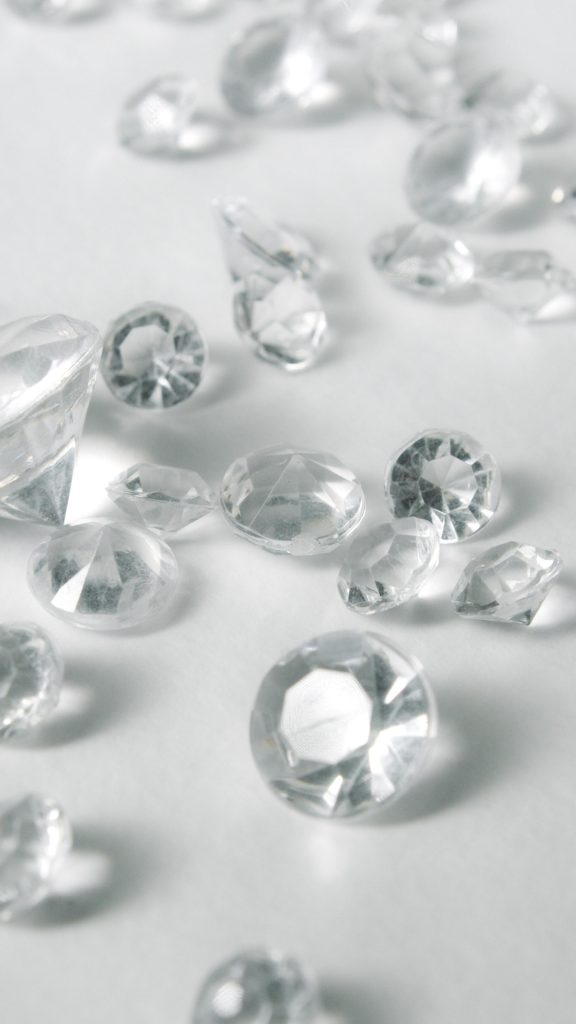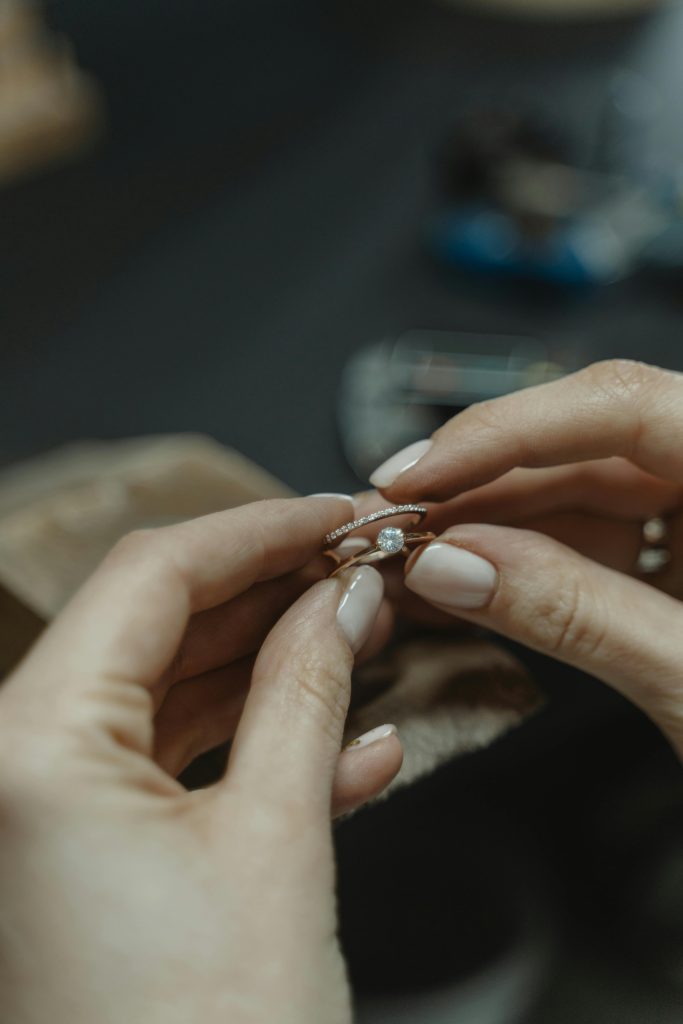In the digital marketplace, high-quality photography is arguably one of the most critical tools for selling lab-grown diamonds. Unlike traditional brick-and-mortar experiences where customers can inspect a diamond in person, online buyers rely entirely on visuals to assess sparkle, color, and craftsmanship. Effective imagery not only helps display the diamond’s beauty but also builds trust and transparency between seller and buyer. When photography fails to capture the true brilliance or intricate details of a diamond, it may result in missed sales opportunities or customer dissatisfaction. A diamond that appears dull or inaccurately represented may cause potential buyers to question authenticity, even if the product is genuine. Therefore, investing in quality photography is not an optional step—it is a foundational requirement for successful online selling. Especially with lab-grown diamonds, which are often scrutinized for legitimacy and clarity, visual representation must be impeccable to compete in a crowded and skeptical marketplace.

Choosing the Right Equipment: Camera, Lens, and Accessories
Capturing the intricate brilliance of a lab-grown diamond requires more than just a smartphone camera. Although modern phones are capable of decent imagery, a DSLR or mirrorless camera with macro lens capabilities is strongly recommended for professional results. A macro lens—ideally with a focal length of 90mm to 105mm—allows the photographer to focus on extremely fine details, including facets, inclusions, and cut quality. The camera body should support high-resolution output (preferably 20 megapixels or more) to ensure that every aspect of the diamond can be displayed clearly. Accessories such as a stable tripod are essential for minimizing motion blur, especially when shooting with a narrow aperture for greater depth of field. Additionally, using a remote shutter release or a timer function can further eliminate shake. Investing in proper equipment is not only about image quality but also about building efficiency into your photography workflow, ensuring consistent and professional images that elevate your product listings.
Lighting Techniques to Maximize Sparkle and Fire
Lighting is perhaps the most influential factor in diamond photography. Lab-grown diamonds rely on proper lighting to exhibit their fire (colored light dispersion) and brilliance (white light reflection). The use of diffused lighting is critical to prevent harsh shadows and overexposed highlights. A lightbox or softbox is highly effective in creating an even and controlled lighting environment. Typically, a combination of two to three light sources positioned at strategic angles—such as 10 o’clock, 2 o’clock, and overhead—can illuminate all facets of the diamond without creating glare. LED daylight bulbs with a color temperature around 5000K to 5500K are ideal, as they closely mimic natural sunlight and enhance color accuracy. Avoid using built-in camera flash, which can cause reflections and hotspots that obscure detail. Reflective surfaces such as white cards or mirrors can also be used to bounce light into the diamond, adding extra sparkle without harshness. Mastery of lighting technique significantly influences the visual appeal and realism of diamond images.
Background and Composition: Enhancing Visual Focus
The background and overall composition of the photo play an essential role in directing the viewer’s attention to the diamond. A cluttered or distracting background can diminish the visual impact and professionalism of the image. Neutral backgrounds—such as white, gray, or black—are typically preferred for diamond photography, as they allow the diamond’s sparkle and color to stand out without interference. Black backgrounds, in particular, can enhance contrast and highlight white brilliance, though they may require more precise lighting control to avoid overexposure. Compositionally, using the rule of thirds or centered framing can create balance, while negative space helps the viewer focus entirely on the diamond. Props such as jewelry holders, gloved hands, or textured surfaces should be used sparingly and only if they add to the context of the photo. The goal is to present the lab-grown diamond in a clear, elegant, and distraction-free manner that reflects its value and sophistication.
Capturing Different Angles and Facets
A single image cannot capture the multifaceted nature of a lab-grown diamond, making it necessary to photograph the piece from multiple angles. Essential views include the top (table view), side profile (to show height and mounting if set), and angled views that display fire and brilliance across different planes. Capturing close-ups of specific features—such as inclusions, hallmarks, or the precision of the cut—can also add to a buyer’s confidence. Using a turntable or manually rotating the diamond on a soft pad allows for gradual, consistent repositioning. This enables you to showcase how the diamond reacts under light from different directions, which is crucial for buyers who want to understand how it will perform in real-world settings. When selling loose lab-grown diamonds, clarity in representing all visual dimensions becomes even more important, as buyers are not able to rely on settings or mountings to enhance perceived brilliance. Multi-angle photography helps bridge that gap.

Post-Processing and Image Editing for Accuracy
Post-processing is a vital step in diamond photography, but it must be handled with precision to ensure that the final image remains an accurate representation of the lab-grown diamond. Editing should focus on enhancing clarity, correcting white balance, and removing dust or minor distractions, rather than altering the inherent characteristics of the diamond. Software such as Adobe Lightroom or Photoshop allows for controlled adjustments to brightness, contrast, sharpness, and color fidelity. White balance is particularly critical; if it’s incorrect, the diamond may appear too yellow, blue, or dull, leading to buyer skepticism. However, over-editing—such as artificially increasing brilliance or removing natural inclusions—can lead to customer dissatisfaction when the product arrives. It’s important to maintain transparency and authenticity in every image. Where applicable, offering side-by-side images that show the diamond in both studio lighting and natural light can give buyers a fuller understanding of its appearance. Consistent editing practices across all listings further contribute to a cohesive and professional brand image.
File Format, Resolution, and Website Optimization
After capturing and editing your diamond images, choosing the correct file formats and resolutions for online use is essential. High-resolution images (at least 2000 pixels on the longest side) allow viewers to zoom in and inspect fine details. JPEG is the most commonly used format due to its balance of quality and file size, but for even higher clarity—especially in zoom-enabled views—consider offering PNG or WebP formats where supported. Avoid overly compressed files, as they can introduce noise and distort the clarity of fine facets. When uploading to e-commerce platforms, optimize each image by reducing unnecessary metadata and using image compression tools to ensure fast load times without sacrificing visible quality. Including ALT tags and descriptive file names that reference the diamond’s specifications (e.g., “1ct-lab-grown-round-diamond-VS1.jpg”) can also improve search engine visibility. Ensuring technical precision in both content and backend optimization reinforces credibility and enhances user experience across desktop and mobile platforms.
Including Scale and Contextual Images
While close-up shots are vital for showcasing clarity and cut, buyers also benefit from contextual images that help them visualize the diamond’s size and appearance in real life. Including scale references—such as placing the diamond next to a coin or ruler—can provide a concrete understanding of proportions. For mounted diamonds, lifestyle photos showing the piece worn on a hand, neck, or ear can be particularly effective in conveying how the diamond looks under natural lighting and from a distance. Contextual images help bridge the gap between a static photograph and the buyer’s imagination, increasing buyer confidence and engagement. However, it’s important to ensure that these images are also high quality and do not misrepresent scale. Avoid using exaggerated or unrealistic settings, as doing so can lead to buyer disappointment. When used correctly, scale and lifestyle photos complement your primary product shots and provide a comprehensive visual narrative that supports informed decision-making.
Using Videos and 360-Degree Spins for Dynamic Presentation
To further enhance buyer experience, many successful online diamond retailers are incorporating videos or interactive 360-degree spin photography. These dynamic formats allow viewers to see how light interacts with the diamond’s facets as it moves, closely mimicking a real-life inspection. Videos can also convey subtleties like fire, scintillation, and clarity that may be hard to capture in static images. Shooting diamond videos requires similar lighting and camera techniques as still photography but also calls for controlled movement—either via a motorized turntable or smooth manual rotation. The video should be brief (15 to 30 seconds), well-lit, and in high resolution. 360-degree spin views, though more complex to produce, provide even more interactivity, allowing customers to rotate the diamond at their own pace. When paired with informative voiceovers or annotations highlighting key features, these tools can significantly elevate product presentation. As consumer expectations evolve, offering multimedia content is becoming less of a luxury and more of a standard for online diamond sales.
Final Thoughts: Photography as a Competitive Advantage
In a marketplace saturated with visually rich content and discerning buyers, high-quality diamond photography becomes a defining competitive edge. For lab-grown diamonds in particular—where visual appeal must compensate for lingering consumer skepticism—exceptional imagery is critical for trust-building and brand credibility. From choosing the right equipment and mastering lighting, to post-processing and multimedia presentation, every step in the photography workflow contributes to how your product is perceived. Sellers who invest the time and resources into mastering these techniques are more likely to capture not only the visual brilliance of their diamonds but also the confidence and interest of potential buyers. Effective photography can turn browsers into buyers, reduce return rates, and elevate your reputation in the online jewelry market. By consistently applying best practices and staying attuned to emerging visual trends, sellers can ensure their lab-grown diamonds are represented with the clarity, detail, and beauty they deserve.